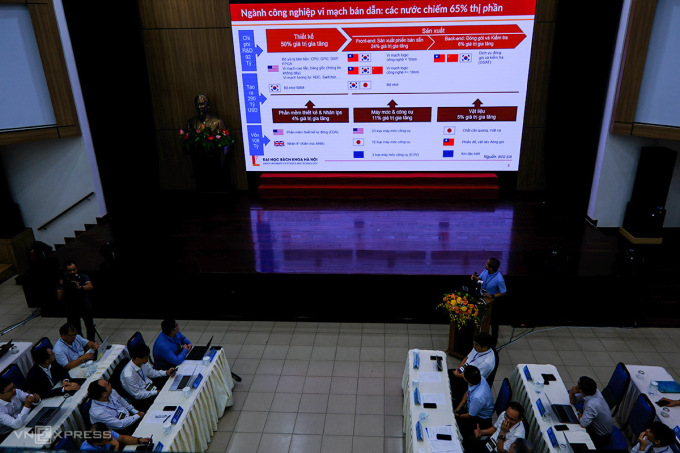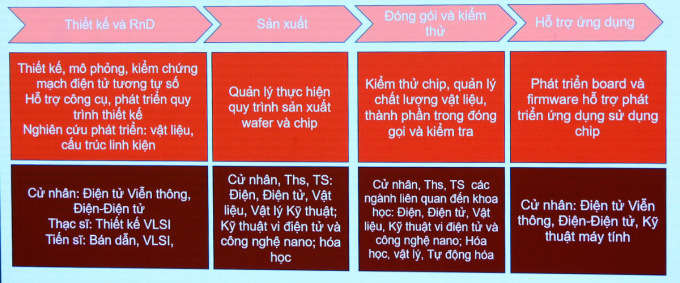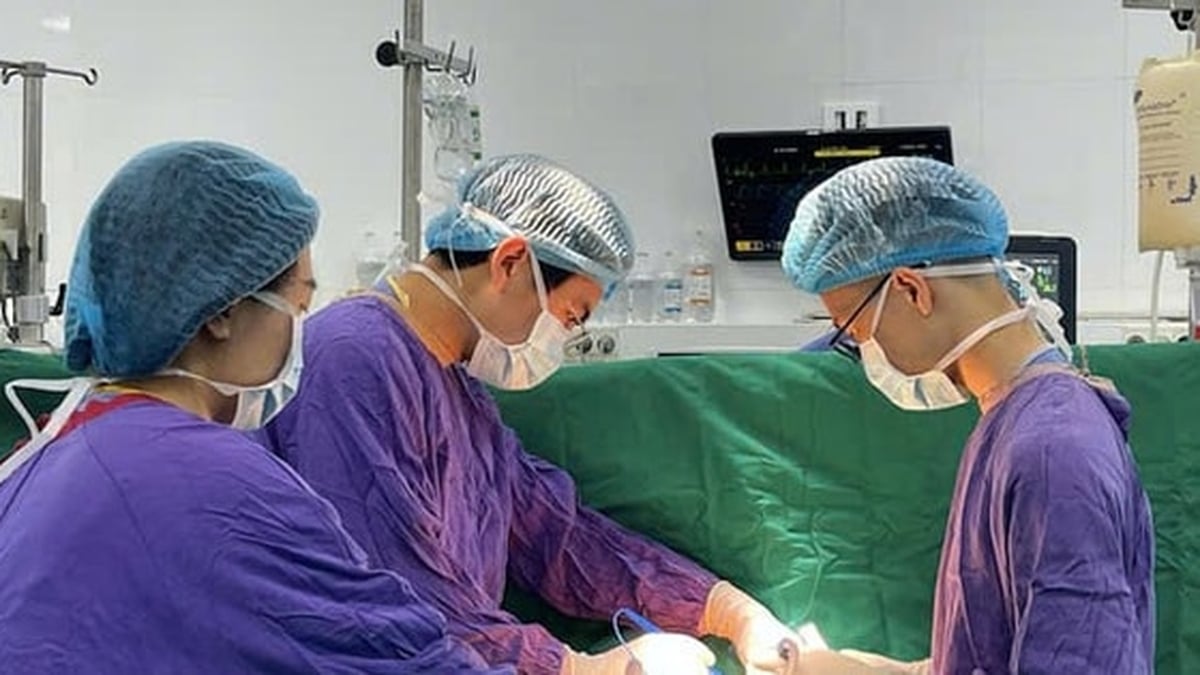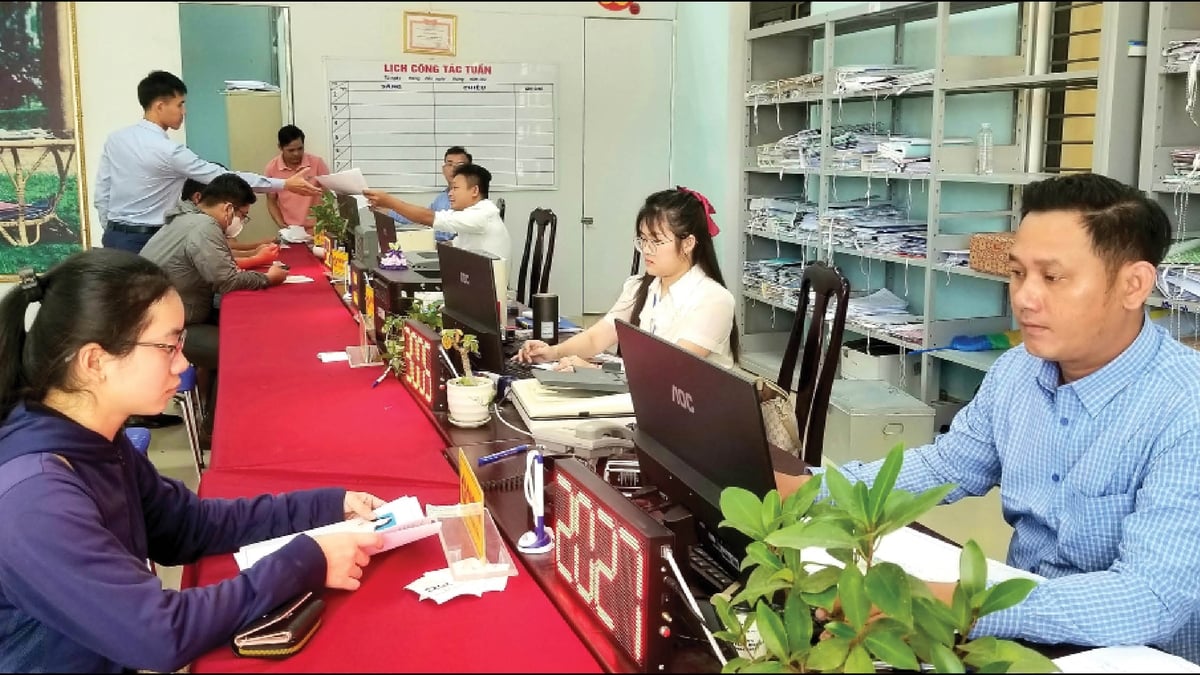Da Nang Semiconductor industry is facing the opportunity to create high-income jobs, with an estimated monthly salary of nearly 30 million for students after 5 years of graduation.
On October 19, at Danang University, the Ministry of Education and Training held a workshop on developing high-quality human resources in the semiconductor chip industry from Vietnamese higher education institutions.
The human resource picture for the industry is forecasted by some economic experts to need about 20,000 people in the next 5 years; 50,000 people in the next 10 years with university degrees or higher. Meanwhile, the number of microchip design personnel is currently about 5,000 people.
According to Minister of Education and Training Nguyen Kim Son, if the semiconductor technology sector is developed, it will raise the level and position of Vietnam in the world. In training human resources in the semiconductor chip technology sector, it is necessary to aim for global thinking and focus on scientific research.
"If we miss a beat, we will be guilty to the country. But if we can do it, we can raise the national position and the position of the entire university system," said Mr. Son.
The Minister noted that this is a high-tech field, requiring investment, high requirements and expectations; students can have high salaries... so universities must train with the spirit of high quality.
"Because it is a new industry, it cannot develop with old experiences, old habits, and old ways of doing things. Instead, there must be a truly new way of doing things and vision," he added.
A representative of Synopsys Vietnam said that the average after-tax salary in the first year of work for a chip design engineer is nearly 220 million VND, and then it gradually increases. With 5 years of experience, a person doing this job earns over 330 million VND a year. This figure gradually increases to over 800 and 1.3 billion VND if they have 15-20 years of experience, according to research by CDVMVN and HSIA.
However, because the labor market in the semiconductor - microchip field is still in its infancy, mainly in the form of potential, the biggest challenge is how to attract students to study the majors and improve the quality of training to meet the strict requirements of businesses. Therefore, the state needs synchronous support policies.
In recent years, Vietnam has had many policies to encourage higher education institutions to expand and develop STEM training majors, focusing on majors in the field of information and communication technology (ICT) and majors serving human resources in the 4.0 industrial revolution - AI, Bigdata,...
In the period 2019-2022, the number of new university students in STEM increased by an average of 10% per year, higher than the overall growth rate of 6.5%. The fields with the strongest average annual growth were Computer and Information Technology (17.1%) and Engineering Technology (10.6%).
Human resources for research, development and production of semiconductor materials have training majors in chemistry, physics, materials... Human resources for design and production of microchips have the most suitable training majors in electronic engineering, electronics-telecommunications; related majors include electrical engineering, control and automation, mechatronics...
High quality human resources are the bottleneck
Deputy Minister of Education and Training Hoang Minh Son said that although semiconductor technology is not a completely new training field, some major universities have been training in it for many years, but the number of students studying and graduating is still very low.
"The shortage of high-quality human resources, especially in high-tech fields, is currently a major bottleneck in attracting large technology corporations to shift their research, development and production investment locations to Vietnam," said the Deputy Minister.

The workshop attracted 40 universities to participate and contribute their papers. Photo: Nguyen Dong
Mr. Nguyen Anh Dung, Deputy Director of the University Department, said that training can be done by recruiting new students from the beginning, or students studying related majors can switch to study in depth in the last 1-2 years; engineers who have graduated from related majors can take additional training courses from a few months to 1-2 years.
Dr. Nguyen Trung Hieu, Academy of Posts and Telecommunications Technology, proposed that the Government and localities research and develop at least 3 high-tech centers, especially prioritizing investment in microchip design and semiconductor technology in the 3 regions of North - Central - South (possibly located in Hanoi, Da Nang and Ho Chi Minh City).
Mr. Hieu said that it is necessary to establish at least one center to invest in servers, purchase copyrights for microchip design software from some units such as Synopsis, Cadence, Mentor Graphic, and build mini Fabs for shared use by universities. In addition, there should be specific policies and regulations to encourage businesses to invest in research, production and trading of semiconductor microchips in Vietnam.
For universities, the Government needs to have policies to support investment in facilities, human resources, and teams of experts for training and research; policies on scholarships, tuition fees, credit incentives, and other policies to encourage learners to be interested in and persistently pursue the field of semiconductor design; and have a Science and Technology Fund and a research funding program for the field of semiconductor design.
"In the STEM sector, schools that have a lot of cooperation with businesses have an advantage," said Associate Professor Dr. Nguyen Hong Hai, Vice Principal of the University of Technology (University of Danang). He also said that many schools currently lack specialized human resources and do not have specialized training programs. Facilities have not kept up with the development of technology and lack investment funds for training and research.
According to Associate Professor Dr. Tran Manh Ha, Ho Chi Minh City National University, it is necessary to add a level 4 major code for the microchip design major in both undergraduate and postgraduate training; speed up the pilot opening of the microchip design major for qualified schools.

Job positions in the semiconductor industry. Photo: Nguyen Dong
Will facilitate microchip training
The Ministry of Education is developing a Plan to promote training, rapidly increase the quantity and quality of high-quality human resources in the field of semiconductor technology, especially microchip design engineers. Currently, there are about 35 universities capable of participating, but the number of experienced training institutions is still small.
Deputy Minister Son said that in order to rapidly increase the quantity and quality of human resources in microchip technology to meet development requirements, it is necessary to strengthen the capacity of higher education institutions, in terms of teaching staff, facilities and technology, training programs, software tools, etc. In addition, there should be solutions to attract students studying suitable and related majors; attract more high school students to enroll in these majors and majors.
"In addition, it is necessary to build cooperation between higher education institutions and between higher education institutions and businesses that use human resources, and with localities where businesses are investing or will invest, in order to share visions, experiences, and optimize the use of resources...", he said.
The Ministry of Education and Training will create conditions for schools that demonstrate their capabilities to enroll students early, and will soon issue special circulars and regulations to attract experts and cooperate in training... The Ministry will also have an executive department to coordinate human resources, common facilities, and share training programs to reduce program compilation time.
Currently, there are over 50 large FDI enterprises investing in Vietnam in the microelectronics and semiconductor industry. After Vietnam and the US upgraded their strategic partnership, it is predicted that more large corporations will invest in Vietnam, mainly requiring human resources for microchip design, hopefully investing in the manufacturing industry.
Nguyen Dong
Source link
























![[Photo] National Assembly Chairman Tran Thanh Man visits Vietnamese Heroic Mother Ta Thi Tran](https://vphoto.vietnam.vn/thumb/1200x675/vietnam/resource/IMAGE/2025/7/20/765c0bd057dd44ad83ab89fe0255b783)













































































Comment (0)